Mahindra Distributor Drops US Lawsuit, Defends 30 MPG Claim
Automotive News [sub] reports that Global Vehicles, a firm with a contract to distribute Mahindra pickup trucks in the US, has dropped its lawsuit in US court in an apparent attempt to rescue its distribution deal. The contract between Mahindra and GV called for British arbitration of disputes, and apparently the British arbitration panel required that all claims be handled through it rather than in US courts. The dropped suit would have required Mahindra to press forward with its US launch regardless of pending arbitration. Mahindra, meanwhile, has said it is looking outside of its deal with GV for a US distributor, so it’s not clear if GV’s olive branch will even make a difference.
Is The Gas Tax Going Up?
The Department of Transportation’s budget has been released [ PDF here], and it includes (among other things):
a six-year, $556 billion surface reauthorization plan to modernize the country’s surface transportation infrastructure, create jobs, and pave the way for long-term economic growth. The President will work with the Congress to ensure that the plan will not increase the deficit.
But, the WaPo’s Ezra Klein points out
Traditionally, the underlying law — the Surface Transportation Assistance Act — was funded by increasing the gas tax. And when I say “traditionally,” I mean beginning with Ronald Reagan in 1982… if the administration is going to duck the fight on reconnecting the Surface Transportation Act and the gas tax, it’s hard to see this proposal getting funded and passed. The House GOP isn’t lockstep against infrastructure investment, but they do seem to be lockstep against new revenues. Plus: The gas tax was a sensible and smart way to fund improvements in transportation infrastructure. That’s why even Reagan signed onto it. It’s disappointing to see Bush’s irresponsible and ideological rejection of it become bipartisan policy.
Hear, hear. One of the reasons raising the gas tax is “sensible”: it makes the market more likely to play ball with President Obama’s goal to get a million plug-in electric cars on the road by 2015. Another: it makes CAFE wrangling far less fraught with drama. In fact, the only downside to raising the gas tax is that it’s unpopular. Oh well…
Quote Of The Day: Ask The Man Who Owns One Edition
Felix Kramer, an entrepreneur and plug-in car activist, is almost certainly the first person in the world to own both a Nissan Leaf and a Chevrolet Volt… which, at least in theory, makes him the perfect person to compare the real-world ownership experiences of these two highly-hyped vehicles ( and once again prove the uselessness of “automotive journalism”). Though he demurs that he “hasn’t had much chance to really compare them,” he tells The Solar Home and Business Journal that
It’s quite obvious to me that for two-car families, it’s no problem in any way for the second vehicle to be an all-electric because that’s the car used for local driving. There’s an enormous market of tens of millions for all-electric vehicles despite Americans’ so-called range anxiety.
Cars are sold as giving you freedom. People go into a dealer and say about an all-electric car, “Oh, I have to plug it in. What if I want to drive it across the country someday? I won’t buy this car.” That mentality is very deeply seated, and that’s part of the reason that the plug-in hybrids could be the primary platform for plug-in vehicles for the next decade or two.
In the meantime, people who get a plug-in hybrid as their second vehicle may find themselves asking, “Why did I pay for this engine, I’m just driving it electrically.” In our family, the Leaf will be the car my wife and I will pick first every day when we’re in the Bay Area. When we’re both driving or we want to travel beyond the range of the Leaf, we’ll take the Volt.
EVs In, Diesel and Hydrogen Out In Obama Budget
View more presentations from US Department of Energy.
The EPA’s National Clean Diesel Campaign and the Department of Energy’s Hydrogen Energy Program have both been defunded in President Obama’s proposed 2012 budget, as the White House focuses on the much– debated goal of putting one million electric cars on the road by 2015. Bloomberg reports The NCDC budget was cut from $80m in 2010 to zero, even though Obama only just reauthorized $100m per year of grants through the program ten days ago. According to Senator Tom Carper, one of the sponsors of that re-authorization, the program
leverages federal dollars so efficiently that for every $1 invested, we get over $13 in health and economic benefits in return
Oh well. Meanwhile, fans of the oil-burners imported by the German brands can relax: the NCDC focused on improving diesel emissions from freight, ports and fleets rather than subsidizing Euro-phile sports sedans. Besides, diesel isn’t the only loser in the rush to push plug-in cars to market: hydrogen is also losing out.
Buick: Born To Be Mild
Mahindra's 30MPG Fiction
Mahindra’s abortive plans to bring its rugged diesel-powered pickups to the US began back in 2007, just as gas prices were starting to run out of control. Now, after years of delays, steadily-increasing prices and general neglect of the compact pickup market have served only to whet our appetite for efficient little developing world-style trucks. Throughout the the last several years, Mahindra has battled with its US distributor, pulled out of other US efforts and generally failed to deliver… all while dangling the dream of a 30 MPG diesel pickup at hopeful enthusiasts. But, as it turns out, Mahindra’s problems don’t end with distribution: though its diesel engine was approved by the EPA, we hadn’t seen EPA confirmation for the long-held 30 MPG goal. Well, the EPA just released the window sticker for the Mahindra TR40 [via MahindraPlanet], a 4X4 four-door version of its 2.2 liter diesel pickup… and it gets nowhere close to 30 MPG.
Ask The Best And Brightest: What Is Your "Freak Out" Gas Price?
Range Anxiety Strikes Mercedes Fuel-Cell Convoy, TTAC Alum
Hydrogen Fuel Cell vehicles (FCVs) are enjoying something of a comeback lately, as everyone from Hyundai and Honda to GM and Daimler are talking about forthcoming production versions of test-fleet FCVs. And with EVs poised to both dominate the short-term green-car game and inevitably disappoint consumers, it’s no surprise that the perennial “fuel of the future” is enjoying a fresh look from automakers. But if high cost and range anxiety are the flies in the EV ointment, the FCV-boosters are finding their hydrogen cars tend to suffer from the same problems. Daimler says
By 2015, we think a fuel cell car will not cost more than a four-cylinder diesel hybrid that meets the Euro 6 emissions standard.
but that by no means guarantees its Mercedes FCV will be truly “affordable” by any reasonable standard, as diesel-electrics are considered one of the most expensive applications of internal combustion power. And then there’s the whole range issue. Yes, FCVs refuel faster than EVs, but even the most ambitious of Hydrogen-boosters, Daimler, are only pushing vehicles with a 250-mile range. Which is why we puzzled a bit over The Globe And Mail‘s assesment that
Three Mercedes-Benz B-Class F-CELL models will make [a 125-day] global trek, which will seek to highlight the real-world benefits of fuel cells versus EVs – mainly their much further range
Flipping over to AutoMotorundSport, we find that the irony which completely escaped the G&M is threatening to overwhelm Daimler’s entire demonstration. And, as is only natural when things like this occur, there’s a bizarre TTAC connection…
Hyundai: What's Your CAFE Number?
Hyundai’s sales were up 22 percent last month, driven by huge growth for Sonata (13,261 units) and Elantra (9,659 units). But, rather than spend the whole press release [ PDF here] trumpeting sales data alone, Hyundai upped the transparency bar on its competitors by announcing it would
begin reporting monthly sales-weighted Corporate Average Fuel Economy (CAFE) results to provide journalists, policy-makers and consumers with additional data to promote more meaningful dialogue on the feasibility of future fuel efficiency targets for the industry…
For January 2011, Hyundai’s sales-weighted CAFE level was 34.7 miles per gallon, with a model year mix for the month of 86 percent 2011 and 14 percent 2010 model year vehicles. This is a significant increase from Hyundai’s most recent official CAFE level for the 2009 model year of 31.7 mpg.
By publishing both its fleet mix (12%) and CAFE average, Hyundai is proving that marketing is a million times easier when the facts fit the message. At 34.7 CAFE, Hyundai is a single MPG away from complying with the 35.5 MPG 2016 proposed CAFE standard, and just a whisker away from meeting its corporate commitment to meet 35 MPG fleet by 2015. Which is all fine and dandy, but as a blog that’s forever digging for obscure information about the car industry, we’re even more excited about Hyundai’s decision to take the lead on transparency. TTAC encourages all automakers to release both sales-weighted CAFE numbers and full fleet-mix numbers (and any other relevant data) with their monthly sales reports. The truth, as we say around here, must out! [Hyundai and Kia sales breakouts after the jump]
Trucks Save UAW's "Green Car Compromise"
During the government’s bailout of General Motors, the UAW agreed to a number of concessions, including management’s ability to use “Innovative Labor Practices” in order to build a fuel-efficient subcompact car in the US. As a result, the 1,600 workers at the firm’s Lake Orion plant had a choice: the 800 most senior workers would return at the $28 “tier one” wage, while another 500 workers would be able to return only if they accepted a 50% pay cut, pushing them into the union’s “second tier” of wages. Workers forced into the tier two, which typically applies only to new hires, were not allowed to transfer to other Michigan plants, and could neither vote on the agreement, nor strike because of it. After all, the bailout’s green-tinged sales pitch meant that building a subcompact in the US was a politically necessary move, even if it went against every UAW principle… which is why it’s awfully ironic that the safety valve for this deteriorating situation is a factory building trucks.
US-Market Fiat 500 Rated At 38/30 MPG With Manual, 34/27 With Auto
Toyota Rejects Industry Lobby, Embraces CAFE
VW Updates The One Liter (235 MPG) Car
Who's Afraid Of CAFE? Not Detroit
Hard on the heels of yesterday’s story on Hyundai’s preparation for CAFE standard ramp-ups comes this counterpoint, courtesy of the Detroit Free Press. Walter McManus, director of automotive analysis at the University of Michigan’s Transportation Research Institute, did his own study on a possible 43 MPG 2020 standard and his findings, as presented at a Citi Investment Research conference call, seem quite positive for American-based automakers. McManus’s research took several basic assumptions for granted in order to reach his conclusions, namely that
• Gas prices will average $4 a gallon between now and 2020.
• Industry sales will be 16.3 million vehicles in 2020.
• Every manufacturer complies with 2016 CAFÉ standard.
• Plug-in hybrids and electric vehicles will be less profitable than gas-engine vehicles.
Now, right off the bat it’s possible to take exception to some of those assumptions. If gas doesn’t crack four dollars per gallon before 2020, for example, this blogger will be one confused student of history. Also, predicting over 16m units of new car sales is by no means a sure thing. Though a comfortable industry assumption based on the “old normal,” there aren’t many indications that 16m+ annual new car sales was a sustainable level for the US economy. Still, Mr McManus has been doing this for a while, so we’ll give him the benefit of the doubt. So, given his assumptions, what does he foresee for Detroit as it moves to meet a 43 MPG standard by 2020? In two words: great success.
Who's Afraid Of CAFE? Not Hyundai
Remember how the government bailout team forgot to make sure its “Irrevocable Ecological Commitment” from Fiat was measured in “adjusted” Miles Per Gallon, using the EPA test cycle that provides your window sticker number? Well, the same “unadjusted” MPG number Sergio Marchionne used to his advantage is used to calculate the CAFE ratings that have the industry in such an tizzy. Well, the official lobbying parts of the industry, anyway [see also, here]. Hyundai has been saying for some time that it is targeting a 50 MPG fleet average by 2025, although CEO John Krafcik said as recently as August that he didn’t know how the automaker would reach that goal. Now, however, it looks like he’s found a way to bring 50 MPG within reach: use CAFE’s “unadjusted” standard. Just like Sergio. Follow along as Hyundai shows that 50 MPG isn’t as far off as many seem to believe.
EPA, CARB Align Emission Standards Schedules
Kia's Spicy Morning Treat
If the British empire was built on cups of tea, the rise of the Korean automakers might just as well be chalked up to the restorative properties of spicy breakfast foods. There’s nothing like facing the day with sizzling tastebuds and clear sinuses to give a third-tier auto manufacturing nation the perspective needed to steal a march on its Japanese, European and American rivals. Possibly in deference to the healing powers of breakfast kimchi, Kia has named its newest city car the Morning for the Korean market and the Picanto everywhere else… and it’s sure to spice up Kia’s European sales, further extending Hyundai-Kia’s lead as the top Asian brand on the Old Continent.
Mini Prius Not For Europe… So Who Is It For?
Though not technically a new debut at this year’s Detroit Auto Show, the “Prius C” concept was probably the most interesting vehicle Toyota showed at Cobo Hall this year. If nothing else, it certainly shows the promise of an expanded Prius brand far better than the “Prius V.” And if there’s a single market where this “baby Prius” can give Toyota’s eco-brand spin-off a boost it would be Europe, where small, efficient cars rule. But, it seems, this is not to be. Autocar reports
The strength of the Japanese yen seems almost certain to keep a production version of Toyota’s near-80mpg hybrid supermini based on the Prius C Concept hatch out of Europe.
Chrysler's Publicly-Funded Hydraulic Hybrid
When Chrysler let slip at the Detroit Auto Show that it would be offering a hybrid version of its 300 sedan by 2013, we automatically assumed that the Pentastar was going back to its Hemi-based Two-Mode V8 hybrid system, jointly developed by GM, Chrysler, BMW and Mercedes. Not so, it turns out. That billion-dollar drivetrain has been relegated to poor-selling hybrid SUVs, and it’s already being considered a dead-end by at least the German firms who helped develop it. Instead, it seems that Chrysler has gone to the government for a hybrid system, and will adapt a hydraulic hybrid system developed by the EPA.
Porsche's New Engine: Flat-Four Under Develoment
Porsche’s planned “Baby Boxster” has been a divisive issue for fans of the Zuffenhausen brand: on the one hand it holds the promise of a pure, low-cost entry to the Porsche driving experience; on the other, it’s a neo-914, a Volkswagen first. And with VW and Audi versions planned as well, what on earth would be the point of Porsche offering a third version of a mid-mounted, inline-four-powered roadster? Luckily that’s not a problem Porsche will have to worry about, as the firm’s R&D boss has confirmed to Autocar that
We have a four-cylinder boxer engine under development.
Is Audi Wankeling Without Permission?
Wither The Cadillac 2.8T V6?
When I attended the launch of the Buick Regal, Buick’s product reps were anxious to talk all about the forthcoming Buick Regal GS, the high-performance version of the Opel Insignia-based sedan. At the time, the Buick Boyz were anxious for input; what, they asked, would enthusiasts prefer: a manual transmission or all-wheel drive. My answer: all of the above. Surely, I thought, Buick would be bringing a rebadged version of the Opel Insignia OPC, with AWD and the GM 2.8T V6 from the Cadillac SRX Turbo and Saab 9-5 Aero. No, came the answer. The 2.8T was not approved for use in a Buick. Stung by past oversharing between divisions, GM had decided that the 260-325 HP, Australian-built LP9 engine would be limited to applications in Caddys and Saabs. But now, it seems that GM may have penned some kind of deal with Saab, as GMInsideNews reports that the LP9 has been discontinued from its last remaining Cadillac application, the SRX Turbo.
How Efficient Is The Chrysler 200?
The Full-Sized Future: Trucked By The High Cost Of CAFE?
Mass SUV consumption may have been weaned over to car-based Crossovers, but pickup trucks are still hugely popular and a major challenge for automakers facing steep increases in government CAFE standards.The average 2010-model American pickup truck weighs nearly 5,000 lbs, making it some 22 percent heavier than its equivalent ten years ago. Thanks to that weight gain, average pickup truck efficiency has improved by a paltry two percent since 2000. This year, the fleetwide light truck fuel economy standard was 24.9 MPG, but by 2016 light trucks will need to average about 30 MPG to comply with already-set CAFE increases, and could face another sharp increase by 2025. As a result, it seems that the era of cheap pickups may be coming to an end. Though the Detroit automakers say hybrid and plug-in drivetrains will help, it’s clear that more than anything else, trucks need to lose weight. That’s where things start getting expensive…
What's Wrong With This Picture: You Think This Is A Game? Edition
Bio-Fuel Boondoggle Hits Europe, Kills Cars
EU car owners will get a new kind of gasoline – whether they want it, or not. Most don’t want it. They get it anyway. While US-automakers sue to stop ethanol blends, an edict handed down from Brussels demands that Super has to contain 10 percent of ethanol. An alliance from Germany’s ADAC autoclub to Greenpeace says the new gasoline is a work of the devil, it is liable to ruin cars, and the environment.
Former Shell President Predicts $5 Gas By 2012: SUV Shock Coming?
Speaking to CNN, former Shell Oil President John Hofmeister warns that, although American oil consumption may have already peaked, high prices at the pump could come back with a vengeance over the short and medium term.
The issues that gave rise to high priced gasoline in 2007 and 2008 are repeating themselves, except the world demands even more oil in the next several years than before. Asian growth is continuing, e.g. 17 million new cars per year just in China, and will demand more oil. U.S. economic recovery has brought demand back to where it was before. Economic growth means even more demand. But the U.S. Government is prohibiting expansion of U.S. domestic crude oil production which puts upward pressure on global crude oil prices… If we stay on our present course there is no question but that prices will rise to the $5.00 gallon level by 2012 in my opinion.
With profits returning to the auto industry in large part thanks to rebounding sales of large cars and SUV/Crossovers, this is the kind of warning that should ring out in the headquarters of the major manufacturers. Gas prices have been on a subtle upward trend since bottoming out at just over $1.60 in December of 2008, and the national average seems to be creeping up to the level it was at before it skyrocketed to over $4/gal in the Summer of 2008. Which makes you wonder: will the automakers be better prepared to deal with a spike in gas prices this time around?
Ford Starts Stop-Start Next Year
Chrysler To Get Dual Clutch Transmissions… By 2013
Chevy Volt Mileage: No, It Doesn't Get Less Complicated Than This
Good on Chevy for making this video covering the Volt’s (relatively) complex efficiency calculus. Presenting the Volt’s mileage in a fair and accurate yet easy-to-understand manner has been a challenge for Chevy’s marketing (and its fellow travelers). It’s not as short or sexy as any of the Volt’s actual advertisements, but this video is Chevy’s best attempt to date at giving consumers a brief but accurate picture of the Volt’s real-world efficiency. For more accuracy (and inevitable complexity) check out Consumer Reports’ latest findings on living with the Volt in the real world.
Has American Gas Consumption Hit An All-Time High?
Lotus Approves City Car, May Leave UK
Even In Germany, $20k Is Too Much For A Subcompact
Ever since four-door coupes became a dime a dozen, the European auto industry has been looking for a new niche, and for much of the past year or so, it seemed that the next big thing would be “small premium.” Inspired by the MINI, European automakers from Alfa to Audi have been trying to get consumers to spend big money on tiny, plush cars. But with Audi’s A1 starting at €15,800 ($20,873), it seems that even the efficiency-happy Germans aren’t willing to pay the price of entry for this new niche. Audi built capacity for 100k A1s at its Brussels plant, but since introducing the car in August, Audi has sold only 20k of the pricey subcompacts. And yes, the slow sales do seem to be tied to the exorbitant pricetags.
Hybrid Toyota Pickups Coming?
What's Wrong With This Picture: Trail-Rated Edition
Hyundai Bashes Chevy Cruze Eco… Sort Of
Government Investigates The Downsides Of High Fuel Economy Standards
In a supplemental memo related to forthcoming fuel economy standards for the years after 2017 [full doc in PDF here], the EPA has revealed the results of its consultations with stakeholders including the auto industry, and it seems that there are tradeoffs to high standards. The industry’s complaint seems to be that the government has underestimated the impact of higher fuel economy standards on such details as
vehicle performance, utility (e.g., towing capability), and comfort (e.g., noise, vibration, and harshness), the role of competing regulatory or technical requirements (e.g., criteria pollutant and/or safety standards), and assumptions regarding future gasoline fuel properties (e.g., octane levels).
All of which comes with a real price. The government is targeting a 2-6 percent increase in fuel economy standards between 2017 and 2025, which amounts to a range of 47-62 MPG. The NHTSA/EPA estimates show that this level of increase will cost automakers between $770 and $3,500 per vehicle to meet, but automakers insist that these estimates are too low. And apparently, the government takes these concerns seriously enough to blow its end-of-November deadline for narrowing the range of possible standards. At the top of the list of issues for study: the age-old trade-off between efficiency and safety.
GM Considering CVTs In Daewoo-Developed Cars
BMW Announces Environmentally Friendly Drivetrain Of The Future
Major players in the industry think that EVs are a stopgap measure at best. Volkswagen declared that nobody wants EVs, except governments. In Japan, Toyota and Honda are talking louder and louder about hydrogen. There must be something better than plugins: A revolutionary technology that powers the car from a renewable energy source in an environmentally responsible fashion.
BMW just found what the world needs.
Sticker Wars: Leaf Beats Volt. FTC Trumps EPA
The official MPG(e) ratings for Chevy’s Volt and Nissan’ Leaf have been out for a few days. Finally, The Nikkei [sub] noticed something: Nissan’s “all-electric Leaf has gained bragging rights in the U.S. market after garnering a higher fuel economy rating than the Chevrolet Volt.” Bragging rights bestowed courtesy of the U.S. government.
Home Invaders: Volkswagen Turns That Whole EV Thing On Its Head
While everybody is dreaming (or shuddering at the thought) of masses of electric vehicles hanging off the grid at night, while that last ICE is donated to the Smithsonian, Volkswagen is taking a completely different tack. Forget the grid. Get your very own power plant. And guess what: It’s ICE powered.
China's Great Electrification Drive: 1 Million Electric Cars By 2015
India is keeping a wary eye on their neighbor north of the Himalaya. The Indian press is usually not prone to hyping Chinese achievements. Therefore, this news item should give us reason to sit up and take notice. China will shortly announce a plan to sell a million electric cars annually from 2015 on out. That’s what India’s Economic Times says.
A million electric cars a year?
Looking Into The Future, Toyota Spots The Present
When Autoweek asks the R&D boss at an alt-drivetrain leader like Toyota what the future of its powertrain development looks like, one tends to hope for something revelatory in his answer. Instead, we get
In the next five years, the general trend is downsizing of engines and the use of turbochargers. Another development will be direct fuel injection.Gosh, really? So Toyota is going to follow automakers like Fiat and Hyundai (not to mention the entire industry) when it comes to spotting and adopting engine technologies like gas direct injection (GDI) and strategies like downsizing and turbocharging? With a late start on EVs as well as the suite of ICE-improving technologies, Toyota had better hope that hybrid sales stay strong… and that its hydrogen technology is affordable by 2015. Otherwise, there are plenty of other firms ready to lead the industry…What's Wrong With This Picture: The 99 MPG Non Sequitur Edition
Chart(s) Of The Day: EPA Breaks Down 35 Years Of Automotive Trends
Toyota's Green Roadmap: Yellow Light For EVs
Toyota is the king of the hybrid hill, but they have been accused of dragging their heels on pure plug-ins. Then Toyota plunked $50m on Tesla (and convinced them to move into the NUMMI plant.) This got people thinking. Some thought it was just an elegant way to unload the NUMMI plant. Some saw it as the beginning of Toyota’s electric future. Half a year later, Toyota puts their concrete plans on the table.
Mercedes And BMW Drivers Are Criminals? Germany Fights Back
India’s Environmental Minister Jairam Ramesh’s jab at diesel-powered trucks and SUVs is turning into a major diplomatic row. Turns out that he didn’t just call drivers of diesel-powered trucks and SUVs criminals. He also said that said the mere act of driving big-engined luxury models from BMW and Mercedes-Benz in India was “criminal”. Jaguars weren’t mentioned.
2011 Elantra Joins 40 MPG Club, As Hyundai Aims For 50 MPG By 2025
Hyundai’s new Elantra is the latest C-Segment car to receive a 40 MPG highway EPA rating (29 MPG in the city) as it prepares to take on Ford’s 40 MPG 2012 Focus and the 42 MPG Chevy Cruze Eco. The Accent’s only engine is a 1.8 liter engine is expected to make 148 HP and 131 lb-ft of torque, meaning you won’t have to upgrade to a special engine and aero package (as in the Cruze) or a dual-clutch transmission (as apparently is the case with the 2012 Focus). It will be down on power compared to the 160 HP/146 lb-ft Focus and more power but less torque than the 138 HP/148 lb-ft Cruze Eco, but should undercut both on price. And by bringing the model-wide efficiency up rather than tweaking special models for high efficiency, Hyundai’s John Krafcik says that his firm will have no problem hitting a 50 MPG average by 2025 (though a CAFE calculation that gives the 40/29 MPG ELantra a 44 MPG average doesn’t hurt). Meanwhile, when was the last time you heard anyone even mention the Civic or Corolla? The times, they are a-changing…
Ask The Best And Brightest: Gas Tax?
With the federal deficit balooning out of control, President Obama’s National Commission on Fiscal Responsibility and Reform has publicized its preliminary proposals, and goodness are there a lot of them. But only one of the commission’s proposals gets to the heart of this nation’s automotive future: a proposal to increase America’s gas tax. Federal fuel taxes currently stand at 18.4 cents a gallon for gasoline and 24.4 cents for diesel fuel, but the commission has proposed a 15 cent per gallon increase, to take effect starting in 2013.
From Korea With Love: The 2012 Hyundai Accent In Detail
Will GOP Victory Kill The Motor Vehicle Safety Act?
Does Efficiency-Per-Performance Matter?
We’ve already been impressed enough with the McLaren MP4-12C’s 3.8 liter turbocharged V8 to say it “looks like mechanical sex” and give it its own gallery. The super-compact, direct-injected engine develops in the neighborhood of 600 hp, giving the new McLaren the dangly bits to show a (similarly-priced) Ferrari 458 the way around a racetrack. And though McLaren clearly thinks the MP4-12C’s race-tested abilities will help build its brand into the new race-nerd standard, it’s also beating Ferrari at a new game that will become increasingly important with time: the C02-per-horsepower game. Ferrari’s 570 hp V8 emits 320 grams of C02 per kilometer, giving the Fezza a rating of .56 grams of C02 per km per horsepower. McLaren’s goal for its not-quite finalized MP4-12C drivetrain is a C02 emissions rating of below 300 gm per km, which would give the supercar closer to a .5 gram per km per horsepower rating. And though the direct-injected, downsized and turbocharged engine helps keep that number down, the MP4-12C’s dry weight is also 176 lbs lighter than the 458’s (2,866 versus 3,042).
European C02 Standards Not So Scary After All
The EPA's Ten Most (And Least) Efficient 2011 Models
With the release of the EPA’s 2011 fuel economy guide comes this list of the EPA’s most fuel-sipping-est vehicles on the US market (EVs and plug-in hybrids excluded). For a list of the ten least-efficient vehicles on the market today, just hit the jump…
With Car Brands Targeting Scooter Sales, Piaggio Bites Back
The need to expand automotive brands while improving fuel economy is driving automakers to some interesting lengths of late. From GM future concepts that have more in common with a Segway than a Cruze, to Honda’s U-3X and Chrysler’s ill-fated PeaPod, automakers are sending strong hints that the future will be smaller and decidedly less car-like. And MINI and Smart recently took this trend to its logical conclusion, each announcing that they would build (or, more precisely, re-brand) scooters… or as they call them, “alternative mobility concepts.” Which raises the question: what’s a scooter brand to do? Well, Piaggio, maker of the Vespa and other scooter-based “alternative mobility concepts” isn’t going to just drone off into that good night, and it’s fighting back by creating an “alternative” to its core scooter products: a four wheeled car-like “mobility concept.”
For $15k, Voltify Your EV With A Range-Extending Trailer
Diesel Options Enjoy One-Third Take Rate
The Berlin Miracle (Or Just Another EV Hoax?)
Editor’s Note: On Monday, TTAC’s Martin Schwoerer wrote about a planned record-breaking non-stop run of 600 KMs, from Munich to Berlin, with a car that was equipped with a “revolutionary” electric battery system. Something smells funny, he said, and vowed to donate 100 Euros in case the drive was completed. Well, it was. So, how does it feel to have pie on your face?
How about Vegetarians Against the klan? Or maybe the Tugg Speedman Foundation? No, there are probably better organisations to give my money to. Guess I’ll ask the Best & Brightest…
Let Freedom Ring: Chevy Volt Ads Debut
This is America man… you can have your electric car and your freedom too.
There’s no doubt about it, the Chevy Volt sounds best when you’re just selling the concept. And no wonder: the concept came was born of Bob Lutz’s unique insight into the American psychology… not to mention a psychologically-charged desire to rub the Prius’s nose in some mud. But what nobody seems to be pointing out is the fact that the flip side of being “all things to all people” is fundamental compromise. And in the case of the Volt, the risk is that it won’t be as good of an electric car as the Leaf and it won’t be as good of a gas-powered car as any other hybrid. If GM’s pitch that Volt equals EV plus Freedom doesn’t take, the car will go nowhere fast… so how does the first attempt strike you?









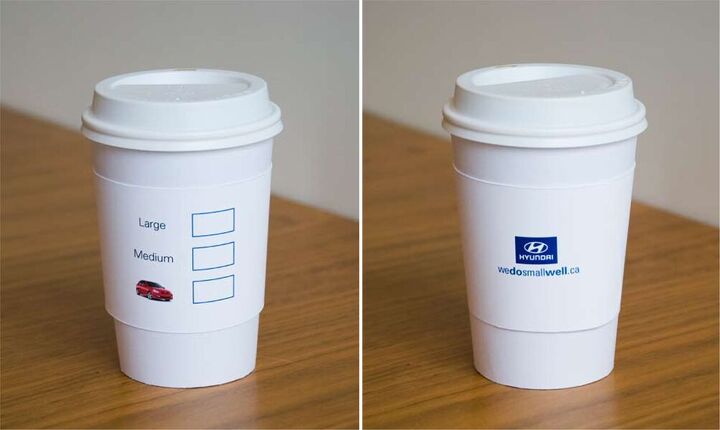

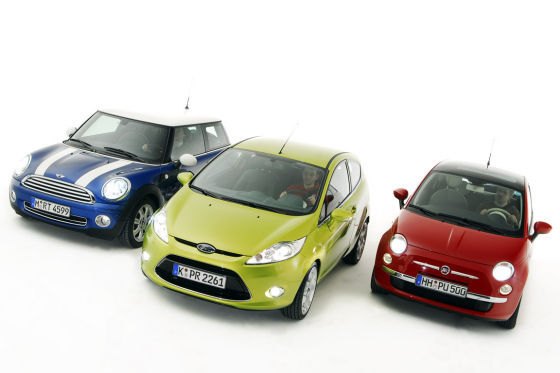



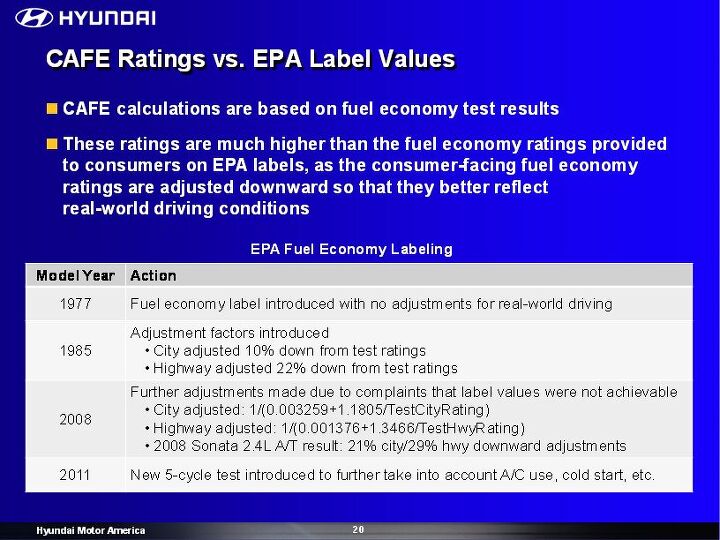







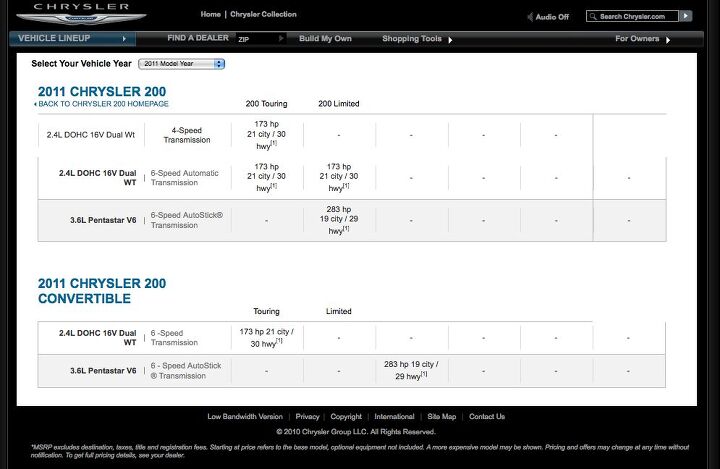
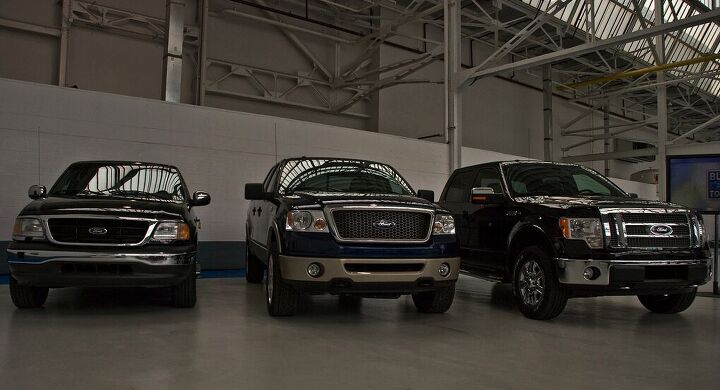

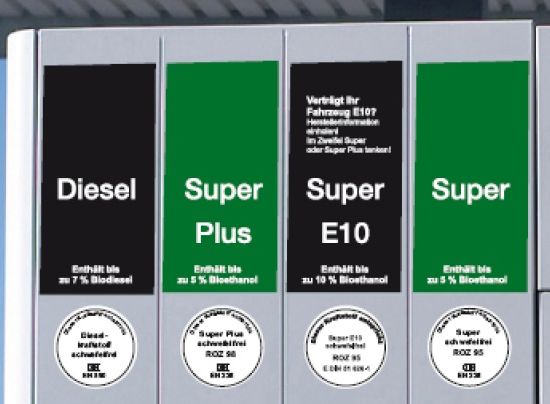
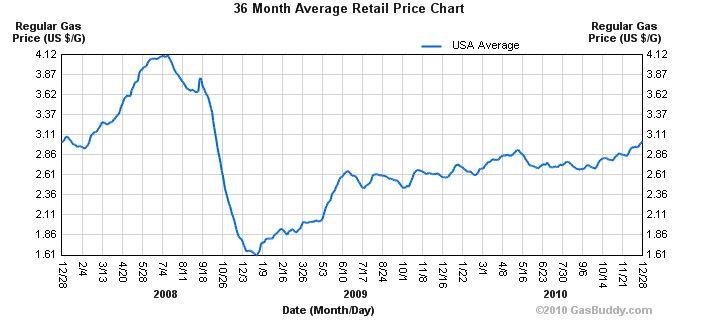

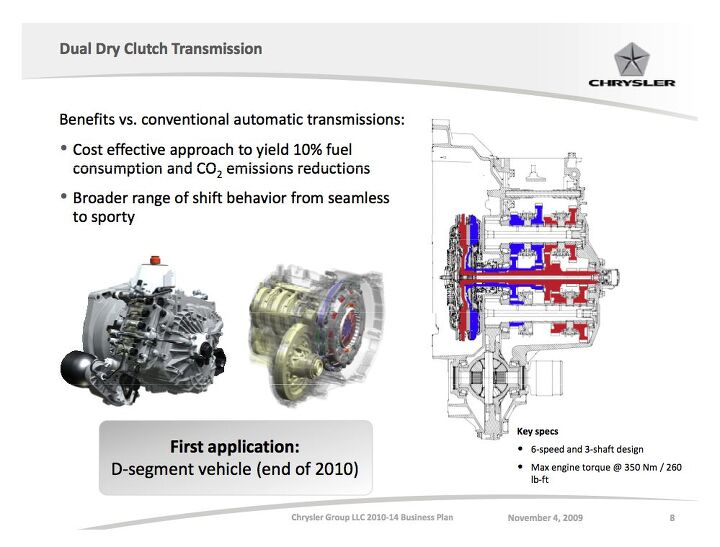

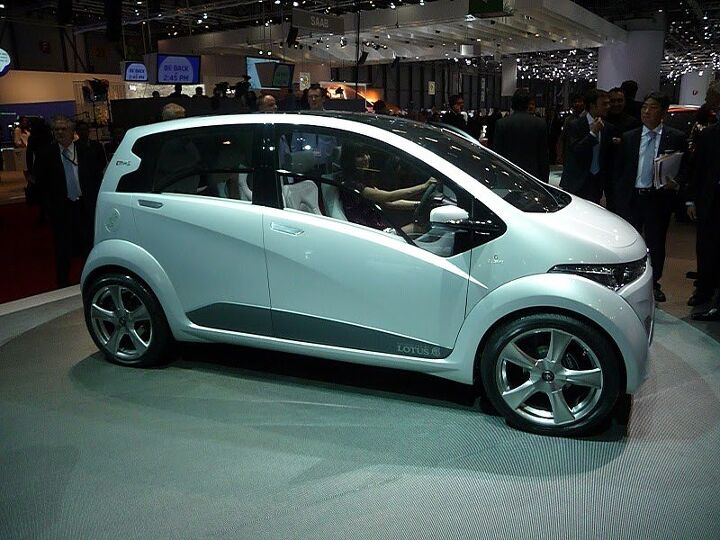
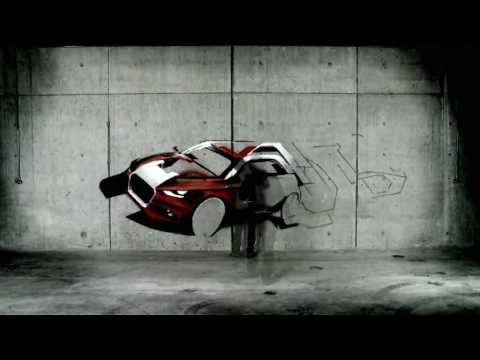
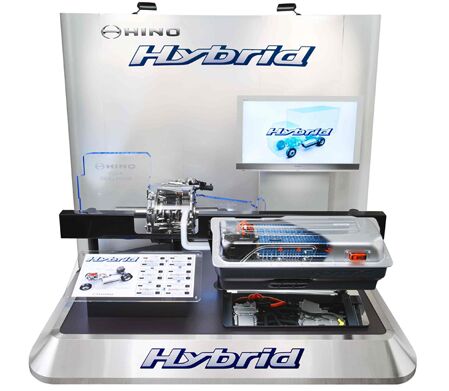

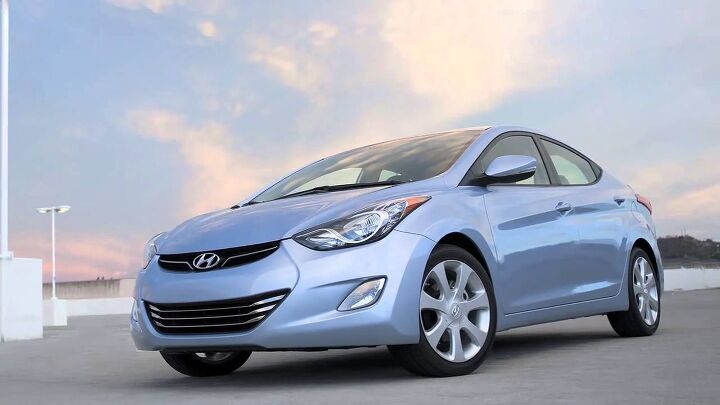
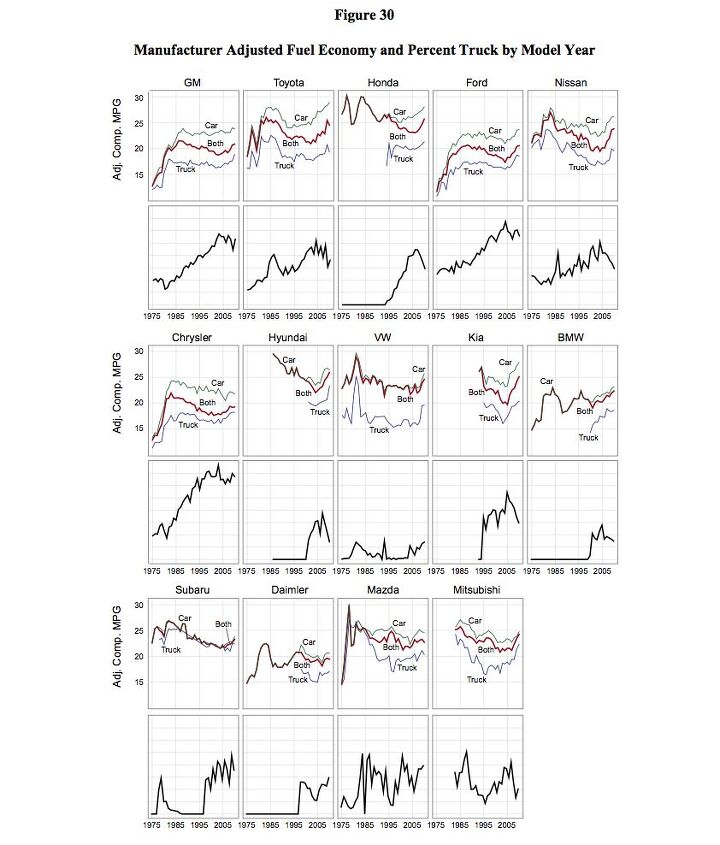
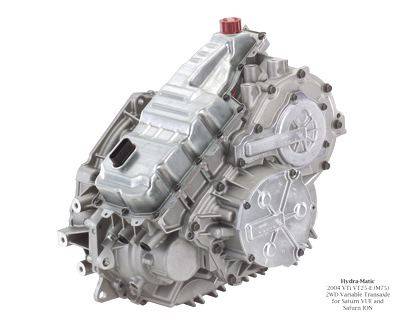





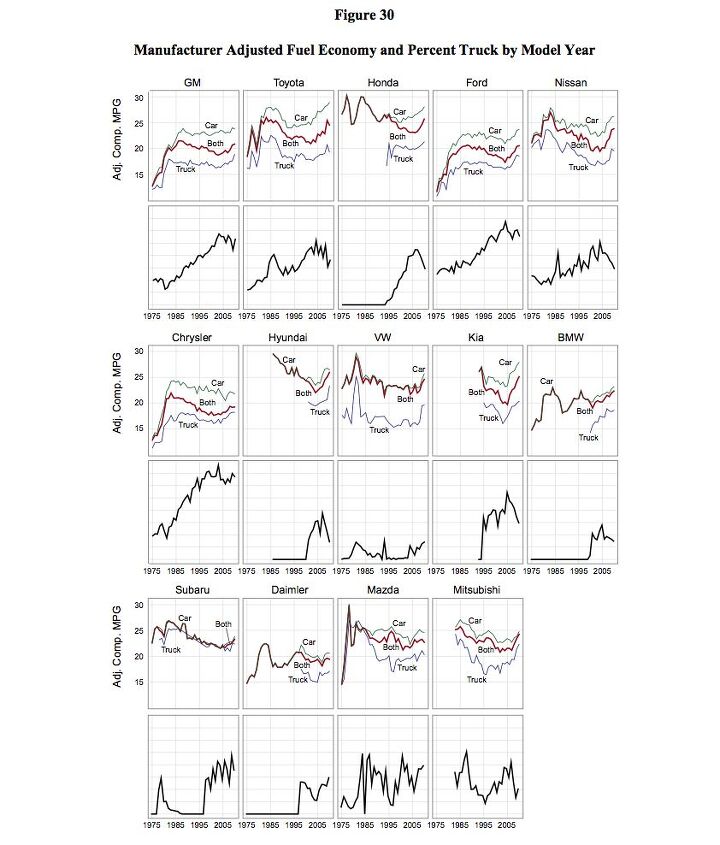



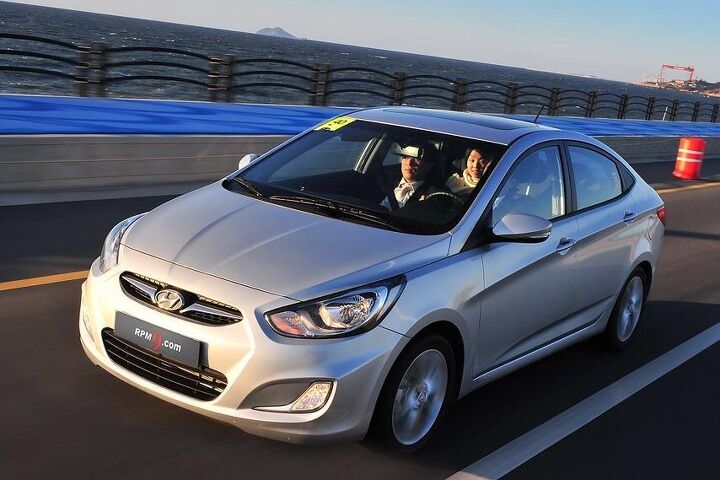
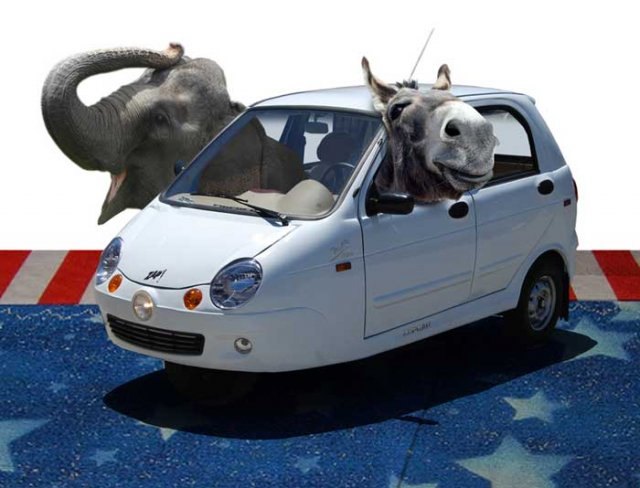


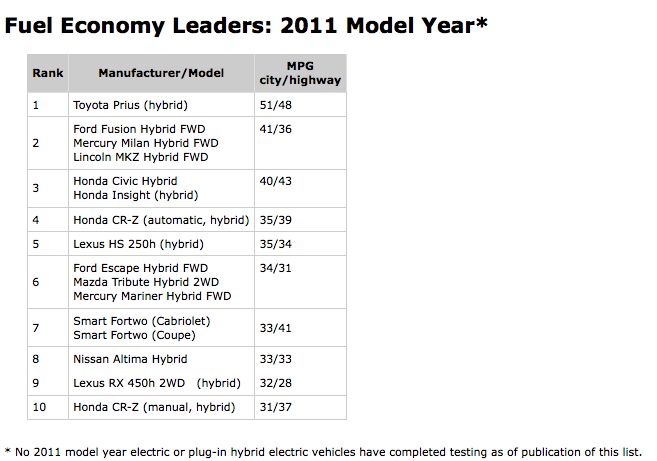

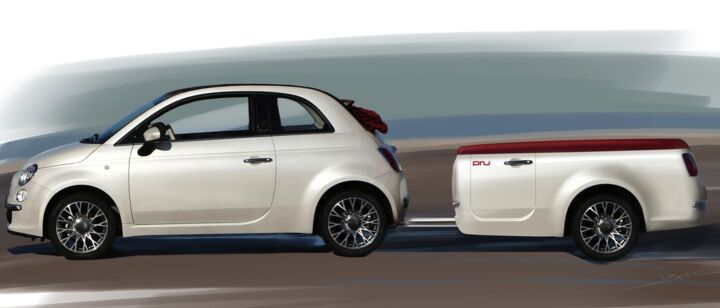


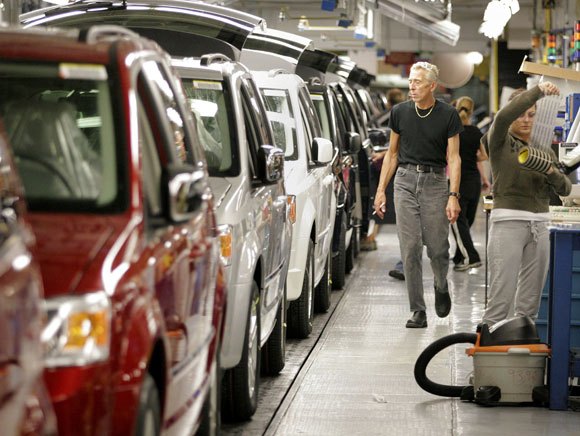












Recent Comments